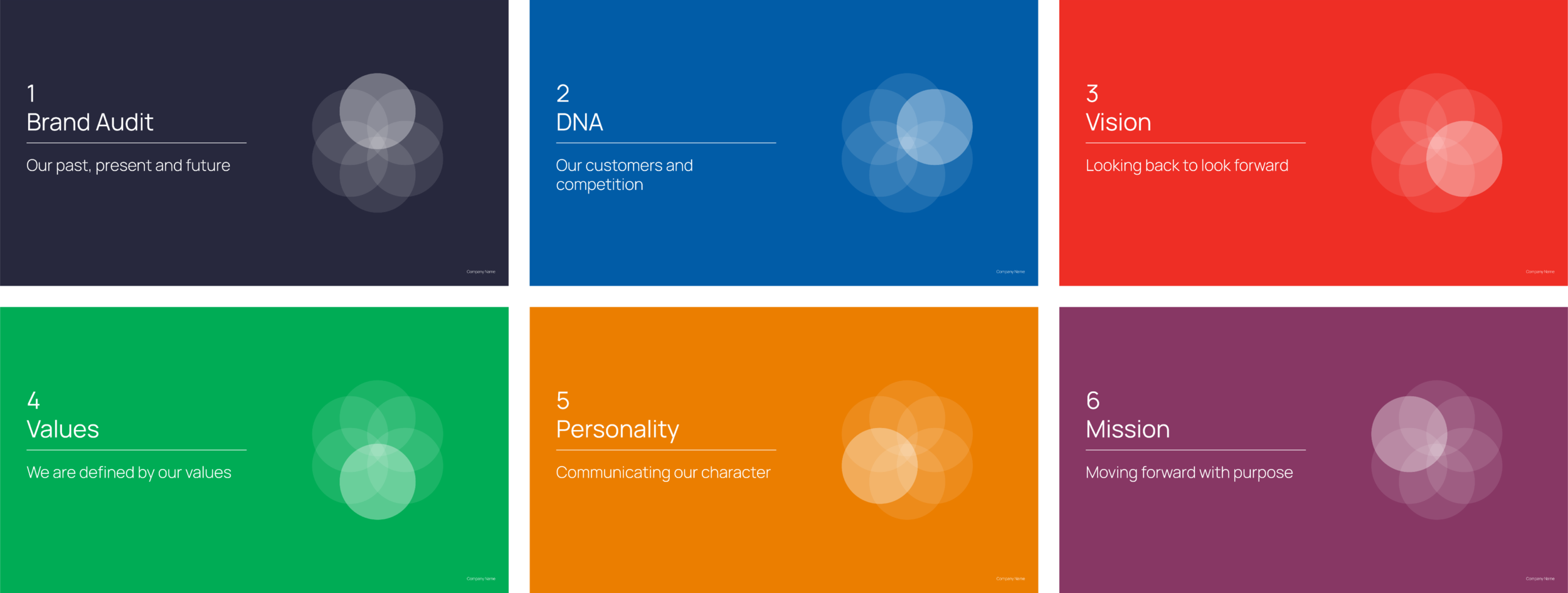Branding Toolkit — Brand Strategy
16.09.21
Brand strategy is an important stage of any scale of branding project. In order to correctly position, and therefore create a brand, we need to understand as much as we can about the company, service or product.
The first part of the branding process is to build out a design brief for the project. Research is taken through a variety of ways. We will then work through a series of interviews with key business stakeholders, and build out a strategy document, so we can understand where the company sits in the market, it’s competitors and audience so we can position the brand and develop it’s visual personality and tone-of-voice.
Brand Strategy Toolkit
During informal interviews with key stakeholders of the brand, we get to know the company and begin to build out our design brief. We frame the interviews through six key areas including:
1. Brand audit
2. DNA
3. Vision
4. Values
5. Personality
6. Mission
1. Brand audit
Our past, present and future
Quality and consistency create identity
— Jony Ive
What is in your future?
—During the first part of the workshop we will first consider what the future will look like for your business.
What are your goals for the next 5, 10, 15, 20+ years?
—We will then be more precise and create a roadmap for the coming years. We will understand what products or services might be added and how the company will evolve.
1.1 Company background from our Brand Building Toolkit
2. DNA
Our customers and competition
People don’t buy what you do. They buy why you do it.
—Simon Sinek
To understand the brand's purpose we need to get to the ‘why’ behind it. We run dissect three questions.
What are you offering?
This is a simple, direct statement about what you are offering the world. Example: ‘We are nanofibre product specialists’
How are you unique?
What’s our secret sauce? What sets us apart from the competition? Example: “Made with 100% natural ingredients”
Why do you exist?
To reach the purpose of your brand, we ask aside from money, what is your reason for being?
2.2 Service map from our Brand Building Toolkit
3. Vision
Looking back to look forward
A brand is a story told consistently through time
— Michael Beirut
Road map
Using this road map, consider your organisation’s past, present and future. We should first discuss the past, what are the key milestones in our history that have bought us to the position that we are in today? Next, consider our ideal future. What is the blue sky situation for the organisation? Finally, consider where are you now? What are the organisation’s recent achievements?
3.1 Road map from our Brand Building Toolkit
4. Values
We are defined by our values
If people believe they share values with a company, they will stay loyal to the brand
— Howard Shultz
What are your three most important brand values?
— Don’t fall into the trap of clichés, (‘authentic’!) we find something unique for your brand.
4.2 Value map from our Brand Building Toolkit
5. Personality
Communicating our character
Brands, like people, have personalities and they can make or break them
— David Ogilvy
Brand personality sliders
We look into the personality of the brand, using brand personalty-sliders. Project-specific considering which aspects of a personality are relevant, this tool helps us dig into the brand personality.
5.1 Personality sliders from our Brand Building Toolkit
Brand archetypes
To help understand the personality further, we consider the 12 brand archetypes to see where your business will sit. Brand archetypes help to inform how the brand expresses itself in the world, from what position and context the brand’s visual language will come from.
5.2 Archetype wheel from our Brand Building Toolkit
6. Mission
Moving forward with purpose
We wont be distracted by comparison if we are captivated by purpose
— Bob Goff
Finally, we get to grips with who the brand will sit alongside, who are the stronger brands within the market that we need to differentiate against.
6.1 The ‘what’, ‘how’ & ‘why’ from our Brand Building Toolkit
Once we have interviewed key stakeholders, researched and built a good understanding of the company and project, we can start to diagnose, and formulate a brand strategy document. This document will outline the new brand positioning through pragmatic analysis of the interviews and research.
Overview of our Brand Building Toolkit









